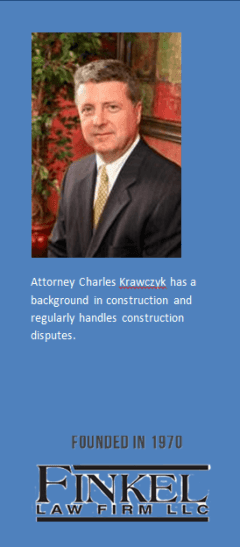Renovations in a Floodplain and Floodway and the Substantial Improvement Rule
What is a floodway?
The channel of a river or stream and the parts of the floodplain adjoining the channel that is reasonably required to efficiently carry and discharge the flood water or flood flow of a river or stream.
What is a floodplain?
The area adjoining a river or stream that has been or may be covered by the 100-year flood map.
If you are located in a floodplain or a floodway and are planning on renovations you need to be aware of some important rules. Based upon where the structure is located and when it was built certain rules will apply. These rules can have a major impact on your property. In both the floodway and flood plain the Substantial Improvement rule applies. Improvements are deemed to be “substantial” if the cost of improvements exceeds 50 percent of the market value of the building. The cost of improvements usually includes the market value for all materials and labor, even if the out-of-pocket expenditures are less (i.e the owner or some volunteers complete some of the labor). The cost of improvements generally does not include the cost of repairs required to remedy health, safety, and sanitary code violations.
If your home or building is located in a floodway and substantial improvements are required to repair the building then the building must be removed.
If your home is in a floodplain what you are able to do will be affected by when the home was constructed. Was it built (or substantially improved) after the effective date of the community’s first Flood Insurance Rate Map (FIRM))? This is the date on which your community began regulating floodplain development. Any post-FIRM structures should already be in compliance with floodplain development standards. Any subsequent improvements must maintain compliance with the standards that were in effect when the building was built. Renovations, repairs, or additions to post-FIRM structures are regulated as new construction.
A post-FIRM home that was in full compliance at the time of construction may still not meet current floodplain development standards. This can result from a map revision that expands the regulated floodplain area and/or increases the calculated height of the 100-year flood (Base Flood Elevation). It can also result from enactment of stricter standards for floodplain development.
The buildings codes currently require flood protection to a level two feet above the Base Flood Elevation. Any substantial improvements to a post-FIRM structure must meet the requirements of the current ordinance, which may require elevation of the entire structure.
Some structures were built prior to enactment of floodplain development standards and were constructed without taking the flood hazard into account. The requirements for modifications to these structures depend on the magnitude of the proposed changes (i.e. is it a substantial improvement). If it is a substantial improvement then the home will like need to be renovated to current flood standards. This may require raising the home 2 feet above Base Flood Elevation or other measures such as filling in lower levels or basements.
If you have questions about the legal implications of repair or renovations please do not hesitate to call the Finkel Law Firm.

